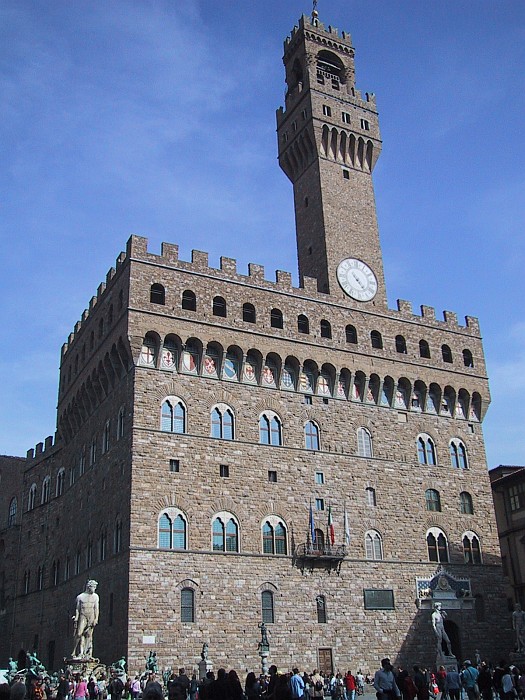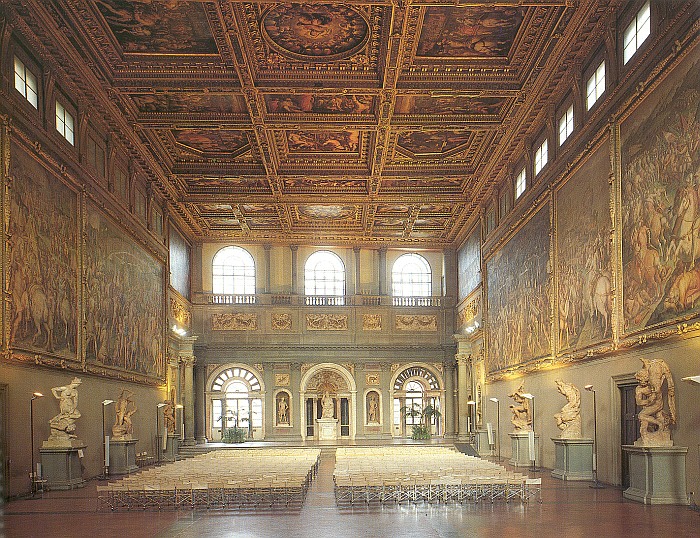(Italian pronunciation: pa-lat-soh vay-kyoh)


Begun in 1294 and intended as a palace-fortress for the residence of the Priors, Arnolfo di Cambio conceived of the building as a large squared block terminated by a row of crenellations. It has a tall tower (1310) 94 meters high, which rises from the Gallery. Between 1343 and 1592 modifications and additions were made to Arnolfo's original nucleus, both inside and out. Cronaca, Vasari, Buontalenti all worked on the structure. On the facade under the arches of the gallery are the frescoes with the nine coats of arms of the city communes. The mechanism of the clock dates to 1667. On either side of the doorway are marble statues to hold chains. Above Cosimo I set an inscription in 1551.
Several statues are lined up in front of the Palazzo Vecchio, including a copy of Michelangelo's David, that replaced the original in 1873, and the group of Hercules and Cacus by Bandinelli. On the facade, above the door, there is a medallion with the monogram of Christ between two lions in a blue field, surmounted by a gable. The inscription Rex regum et Dominus dominantium was placed there in 1551 by order of Cosimo I to replace the previous inscription, set there thirty years before.

view a short movie clip of Savonarola Festival trumpets performing in front of Palazzo Vecchio


Interior of the Salone dei Cinquecento
The Salone dei Cinquecento (prepared to house the assemblies of the Consiglio Generale del Popolo after the Medicis had been expelled from Florence for the second time), is by il Cronaca, while the frescoes were entrusted to Vasari. The marble statues include, on the right hand wall, Michelangelo's striking Genius of Victory.
